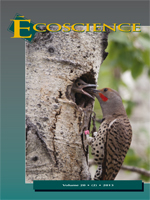Urbanization is a major cause of ecosystem change, and arthropods are a principal component of grassland ecosystems, which are often found in human-dominated landscapes. Although higher trophic level arthropods have been expected to be the most sensitive to urbanization, researchers are debating whether this is the case. We compared the guild structure of grassland arthropod food webs along an urban—rural gradient in the Tokyo metropolitan area, the largest metropolitan area in the world. Arthropod communities were sampled, and guild types were classified by body size and food habit. The guild structure of arthropod food webs was compared among various types of grasslands, and the effects on the guild structure of the surrounding landscape and local vegetation were analyzed. The arthropod guild structure varied along the urban—rural gradient. Large carnivores were abundant in semi-natural grassland ecosystems in the traditional rural landscape, which was at one end of the studied urban—rural gradient. In contrast, small carnivores, omnivores, and detritivores were abundant in the artificial grassland ecosystems of the urban landscape at the other end of the gradient. Because very large carnivores are vulnerable to urbanization activities, rural landscapes rich in these species should be conserved.
How to translate text using browser tools
1 June 2013
Guild Structure in the Food Web of Grassland Arthropod Communities Along an Urban—Rural Landscape Gradient
Yutaka Hironaka,
Fumito Koike
ACCESS THE FULL ARTICLE





